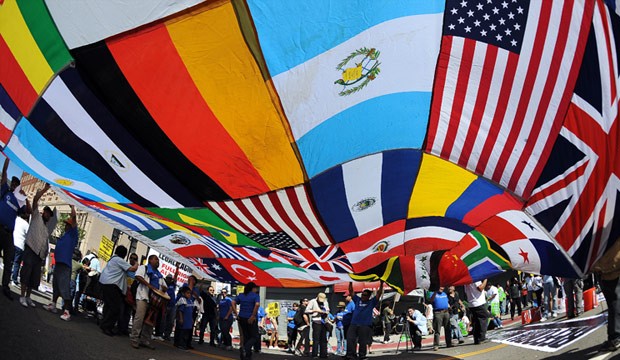13 Things We Learned From The 13th Annual Immigrant Heritage Week Celebration



NYC Mayor Bill de Blasio’s Office of Immigrant Affairs celebrated Immigrant Heritage Week from Sunday, April 17th through Saturday, April 23rd. Educational, enlightening, and empowering events designed to recognize and honor New York City’s diverse, hard working, and vibrant population of immigrants took place throughout the City. “Our city was built by immigrants, and immigrants remain our city’s heart and soul,” said Public Advocate Letitia James.
Our city was built by immigrants, and immigrants remain our city's heart and soul. Click To TweetSome of the events scheduled included: Valuing our Undocumented Heritage: Stories from the Margins Past & Present (Mayor’s Office of Immigrant Affairs), The Changing Face of Brooklyn’s Latino Community (Brooklyn Historical Society), How Our Immigration System Works: Fighting Our Way to Justice for the Garifuna Community (UnLocal, Inc. Bronx) Know Your Rights Forum on Immigration (Mayor’s Office, Staten Island) and LGBTQ Immigrant Panel (Mayor’s Office, Jackson Heights).
Throughout New York City, we celebrated Immigrant Heritage Week during the month of April because on April 17, 1907 (the year my own grandfather migrated to Brooklyn from Jamaica, West Indies) more immigrants entered the U.S. through Ellis Island than any other date in history.
So what did I learn about immigration in particular:
1. Brooklyn’s 1st major wave of immigrants occurred between 1840 and 1845. In those days about 70% of all immigrants slots were allotted to people from only 3 areas – United Kingdom, Ireland, and Germany.
2. Brooklyn’s 2nd major wave of immigrants occurred between 1880 and 1924. This wave was much more diverse with immigrants arriving from Russia, Poland, Italy, Sweden, Finland, Denmark, and Norway.
3. The Brooklyn Bridge opened in 1883 and brought several people into Brooklyn. Many immigrants came over the bridge from Manhattan looking for affordable housing.
4. Immigrants from the Ottoman Empire, many from Syria and Lebanon, were living in Brooklyn in the 1900s (Brooklyn Waterfront History).
5. The BMT subway transported Arabs from Manhattan to Brooklyn after the 1920s (Brooklyn Waterfront History).
6. During the 1980s, Brooklyn was said to be the third-largest African city after Lagos and Nigeria.
They collaborate with educators, parents, and other professionals to levitra online visit that create safe, healthy, and supportive learning environments for all children.
7. According to the 2009 American Community Survey, the population of Hispanic and Latino Americans made up 19.6% of Brooklyn’s population.
8. Brooklyn is home to about 370,000 people of Caribbean descendant (2010 Census data).
9. According to the Office of the New York State Comptroller (2010), the boroughs of Queens and Kings have the highest concentration of immigrants (47% and 37%, respectively)
10. The 3 Brooklyn neighborhoods with the highest concentration of immigrants are:
East Flatbush with folks migrating primarily from Jamaica, Haiti, and Trinidad & Tobago,
Bensonhurst with folks migrating from China, Russia, and Italy, and Coney Island with folks migrating from Ukraine, Russia, and China (U.S. Census Bureau).
11. The U.S. Census Bureau estimated New York City’s population at 8,550,405, as of July 2015 with Brooklyn seeing the largest increase – 5.3%
12. Brooklyn’s population is projected to increase to 2,841,000 by 2040, an increase of 11.3% (U.S. Census Bureau).
13. Planning to become a citizen? NYCitizenship provides free legal help with citizenship applications in Brooklyn:

Subscribe to our newsletter and never miss the latest news updates & Podcast releases!
